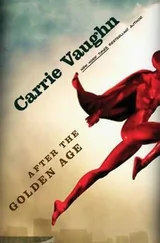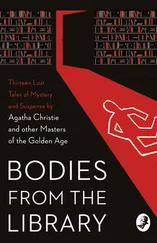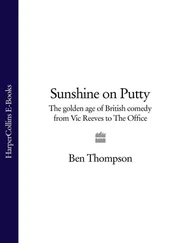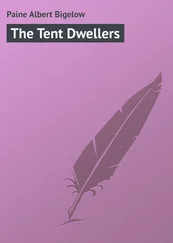Albert Paine - The Car That Went Abroad - Motoring Through the Golden Age
Здесь есть возможность читать онлайн «Albert Paine - The Car That Went Abroad - Motoring Through the Golden Age» — ознакомительный отрывок электронной книги совершенно бесплатно, а после прочтения отрывка купить полную версию. В некоторых случаях можно слушать аудио, скачать через торрент в формате fb2 и присутствует краткое содержание. Жанр: foreign_prose, Путешествия и география, на английском языке. Описание произведения, (предисловие) а так же отзывы посетителей доступны на портале библиотеки ЛибКат.
- Название:The Car That Went Abroad: Motoring Through the Golden Age
- Автор:
- Жанр:
- Год:неизвестен
- ISBN:нет данных
- Рейтинг книги:5 / 5. Голосов: 1
-
Избранное:Добавить в избранное
- Отзывы:
-
Ваша оценка:
- 100
- 1
- 2
- 3
- 4
- 5
The Car That Went Abroad: Motoring Through the Golden Age: краткое содержание, описание и аннотация
Предлагаем к чтению аннотацию, описание, краткое содержание или предисловие (зависит от того, что написал сам автор книги «The Car That Went Abroad: Motoring Through the Golden Age»). Если вы не нашли необходимую информацию о книге — напишите в комментариях, мы постараемся отыскать её.
The Car That Went Abroad: Motoring Through the Golden Age — читать онлайн ознакомительный отрывок
Ниже представлен текст книги, разбитый по страницам. Система сохранения места последней прочитанной страницы, позволяет с удобством читать онлайн бесплатно книгу «The Car That Went Abroad: Motoring Through the Golden Age», без необходимости каждый раз заново искать на чём Вы остановились. Поставьте закладку, и сможете в любой момент перейти на страницу, на которой закончили чтение.
Интервал:
Закладка:
We knew little of Arles except that it was the place where there was the ruin of a Roman arena, and we expected not much from that. The Romans had occupied France and had doubtless built amusement places, but if we gave the matter any further thought it was to conclude that such provincial circus rings would be small affairs of which only a few vestiges, like those of the ruined Forum, would remain. We would visit the fragments, of course, and meantime we drifted along one side of the Place du Forum in the morning sunlight, looking in show windows to find something in picture postals to send home.
What we saw at first puzzled, then astonished us. Besides the pictures of Mistral the cards were mostly of ruins – which we expected, perhaps, but not of such ruins. Why, these were not mere vestiges. Ephesus, Baalbec, Rome itself, could hardly show more impressive remains. The arena on these cards seemed hardly a ruin at all, and here were other cards which showed it occupied, filled with a vast modern audience who were watching something – clearly a bull fight, a legitimate descendant of Nero's Rome. I could not at first believe that these structures could be of Arles, but the inscriptions were not to be disputed. Then I could not wait to get to them.
We did not drive. It was only a little way to the arena, they told us, and the narrow streets looked crooked and congested. It was a hot September morning, but I think we hurried. I suppose I was afraid the arena would not wait. Then all at once we were right upon it, had entered a lofty arch, climbed some stairs, and were gazing down on one of the surviving glories of a dead empire.
What a structure it is! An oval 448 by 352 feet – more than half as big again as a city block; the inner oval, the arena itself, 6 6 The word arena derives its name from the sand, strewn to absorb the blood.
226 by 129 feet, the tiers of stone seats rising terrace above terrace to a high circle of arches which once formed the support for an enormous canvas dome.
All along the terraces arches and stairways lead down to spacious recesses and the great entrance corridor. The twenty thousand spectators which this arena once held were not obliged to crowd through any one or two entrances, but could enter almost anywhere and ascend to their seats from any point of the compass. They held tickets – pieces of parchment, I suppose – and these were numbered like the seats, just as tickets are numbered to-day.
Down near the ringside was the pit, or podium , and that was the choice place. Some of the seats there were owned, and bore the owners' names. The upper seats are wide stone steps, but comfortable enough, and solid enough to stand till judgment day. They have ranged wooden benches along some of them now, I do not see why, for they are very ugly and certainly not luxurious. They are for the entertainments – mainly bull fights – of the present; for strange, almost unbelievable as it seems, the old arena has become no mere landmark, a tradition, a monument of barbaric tastes and morals, but continues in active service to-day, its purpose the same, its morals not largely improved.
It was built about the end of the first century, and in the beginning stags and wild boars were chased and put to death there. But then Roman taste improved. These were tame affairs, after all. So the arena became a prize ring in which the combatants handled one another without gloves – that is to say, with short swords – and were hacked into a mince instead of mauled into a pulp in our more refined modern way. To vary the games lions and tigers were imported and matched against the gladiators, with pleasing effect. Public taste went on improving and demanding fresh novelties. Rome was engaged just then in exterminating Christians, and the happy thought occurred to make spectacles of them by having them fight the gladiators and the wild beasts, thus combining business and pleasure in a manner which would seem to have been highly satisfactory to the public who thronged the seats and applauded and laughed, and had refreshments served, and said what a great thing Christianity was and how they hoped its converts would increase. Sometimes, when the captures were numerous and the managers could afford it, Christians on crosses were planted around the entire arena, covered with straw and pitch and converted into torches. These were night exhibitions, when the torches would be more showy; and the canvas dome was taken away so that the smoke and shrieks could go climbing to the stars. Attractions like that would always jam an amphitheater. This one at Arles has held twenty-five thousand on one of those special occasions. Centuries later, when the Christians themselves came into power, they showed a spirit of liberality which shines by contrast. They burned their heretics in the public squares, free.
Only bulls and worn-out, cheap horses are tortured here to-day. It seems a pretty tame sport after those great circuses of the past. But art is long and taste is fleeting. Art will keep up with taste, and all that we know of the latter is that it will change. Because to-day we are satisfied with prize fights and bull fights is no sign that those who follow us will not demand sword fights and wild beasts and living torches. These old benches will last through the ages. They have always been familiar with the sport of torture of one sort or another. They await quite serenely for what the centuries may bring.
It was hard to leave the arena. One would like to remain and review its long story. What did the barbarians do there – those hordes that swarmed in and trampled Rome? The Saracens in the eighth century used it for a fortress and added four watch towers, but their masonry is not of the everlasting Roman kind, and one of their towers has tumbled down. It would be no harm if the others would tumble, too. They lend to the place that romance which always goes with the name "Saracen," but they add no beauty.
We paid a franc admission when we came into the amphitheater, our tickets being coupon affairs, admitting us to a variety of other historic places. The proceeds from the ruins are devoted to their care and preservation, but they cannot go far. Very likely the bull-fight money is also used. That would be consistent.
We were directed to the Roman Theater, near at hand, where the ruin is ruin indeed. A flight of rising stone seats, two graceful Corinthian columns still standing, the rest fragments. More graceful in its architecture than the arena, the theater yielded more readily to the vandalisms of the conquerors and the corrosions of time. As early as the third century it was partially pulled down. Later it was restored, but not for long. The building bishops came and wanted its materials and ornaments for their churches. Not much was left after that, but to-day the fragments remaining have been unearthed and set up and give at least a hint of its former glory. One wonders if those audiences who watched Christian slaughter at the arena came also to this chaste spot. Plays are sometimes given here to-day, I am told, classic reproductions, but it is hard to believe that they would blend with this desolated setting. The bull fight in the arena is even better.
We went over to the church of St. Trophime, which is not a ruin, though very old. St. Trophime, a companion of St. Paul, was the founder of the church of Arles. He is said to have set up a memorial to St. Étienne, the first martyr, and on this consecrated spot three churches have been built, one in the fourth century, another in the seventh, and this one, dedicated to St. Trophime, in the twelfth, or earlier. It is of supreme historical importance. By the faithful it is believed to contain the remains of St. Trophime himself. Barbarossa and other great kings were crowned here; every important ceremony of mediæval Arles has been held here.
Читать дальшеИнтервал:
Закладка:
Похожие книги на «The Car That Went Abroad: Motoring Through the Golden Age»
Представляем Вашему вниманию похожие книги на «The Car That Went Abroad: Motoring Through the Golden Age» списком для выбора. Мы отобрали схожую по названию и смыслу литературу в надежде предоставить читателям больше вариантов отыскать новые, интересные, ещё непрочитанные произведения.
Обсуждение, отзывы о книге «The Car That Went Abroad: Motoring Through the Golden Age» и просто собственные мнения читателей. Оставьте ваши комментарии, напишите, что Вы думаете о произведении, его смысле или главных героях. Укажите что конкретно понравилось, а что нет, и почему Вы так считаете.












